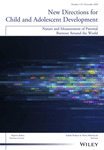Research on parental burnout across cultures: Steps toward global understanding
Abstract
In this commentary we first examine psychometric issues in the ambitious enterprise of cross-cultural application of the Parental Burnout Assessment (PBA). The present reports span a wide range of cultural places. Overall, the PBA presents good face validity and a strong replication of factor structure; future multi-group confirmatory factor analysis will enable quantitative comparisons not currently possible. Content validity is not fully addressed in these reports, so nuanced differences in the nature of parental burnout remain an interesting possibility. Variation the PBA's correlations with other measures, such as education and household type, suggests cultural mediation in the causes and dynamics of parental burnout. In the second part of our commentary, we address more directly whether parental burnout is influenced by the sociocultural context in which it is manifest. We propose that future research will benefit from more precise description of the particular cultural community involved, including the settings, customs, and ethnotheories of parenting. Gaining a global understanding of parental burnout, in other words, rests on building firmer and more differentiated pictures at the local level. The papers in this volume nevertheless present an important step forward in what promises to be an exciting journey of discovery.




